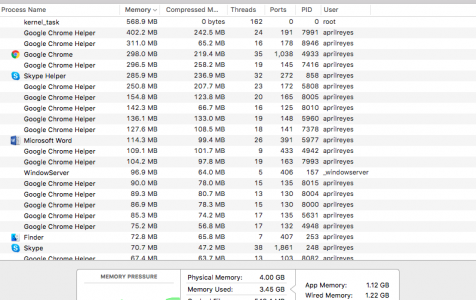
- Find activity monitor on mac terminal how to#
- Find activity monitor on mac terminal mac os x#
- Find activity monitor on mac terminal windows#
Typically it’s best to sort by % CPU or Real Mem when trying to identify a runaway application or process. Once opened, the Activity Monitor lists the PID (process identification), Process Name, User, CPU percentage, number of threads, physical memory usage (Real Mem), and Kind (processor architecture type). Activity Monitor is located within the Utilities folder within Applications.
Find activity monitor on mac terminal mac os x#
The Mac OS X Activity Monitor helps graphically identify applications or processes consuming abnormal memory and CPU levels. Here’s how you can use both to monitor Mac OS X processes like a professional. When it’s necessary to troubleshoot performance by tracking active processes and determining whether a runaway or frozen application or process is overwhelming the system, a couple options exist: Activity Monitor and the command line. Just as with other platforms, occasional issues arise. (How to find out why a Mac does not sleep tested with macOS Monterey 12.0, Big Sur 11.0 and Catalina 10.Erik Eckel goes over the basics of using Mac's Activity Monitor and the command line to monitor processes on Mac OS X. No, you can add the Preventing Sleep column to any Activity Monitor tab.
Find activity monitor on mac terminal windows#
See the tabs and windows with media, paused or playing.ĭo I have to use the Energy tab in Activity Monitor?.

Find activity monitor on mac terminal how to#
How to Find Out Why a Mac Does Not Sleep: FAQ I see lots of “Safari Web Content (Cached)” processes taking up memory can I quit them? Tip: You can also pull up an ongoing log of new sleeping blocks as they happen with pmset -g assertionslog.


With Safari, you can identify the very tab or window that is preventing sleep using Activity Monitor. Sort by sleep prevention: Click the Preventing Sleep column header to put all the applications that keep your Mac from going into sleep mode on top. Look for Yes in the Preventing Sleep column.ĭig down: Do expand applications with sub-processes (such as Safari) to see their preventing sleep.Only active: Select View | Active Processes to see all (and only) processes that are currently active and most likely to prevent sleep. No such column: Select View | Columns | Preventing Sleep from the menu if you cannot see it. Ensure the Preventing Sleep column shows.Search: A quick way to launch Activity Monitor is through Spotlight, of course press Command Space, start typing acti…, and select Activity Monitor.

Where: You can find Activity Monitor in the /Applications/Utilities folder, or under Other in Launchpad. To find out which application, process, thread, or Safari tab is preventing your Mac from sleeping:


 0 kommentar(er)
0 kommentar(er)
